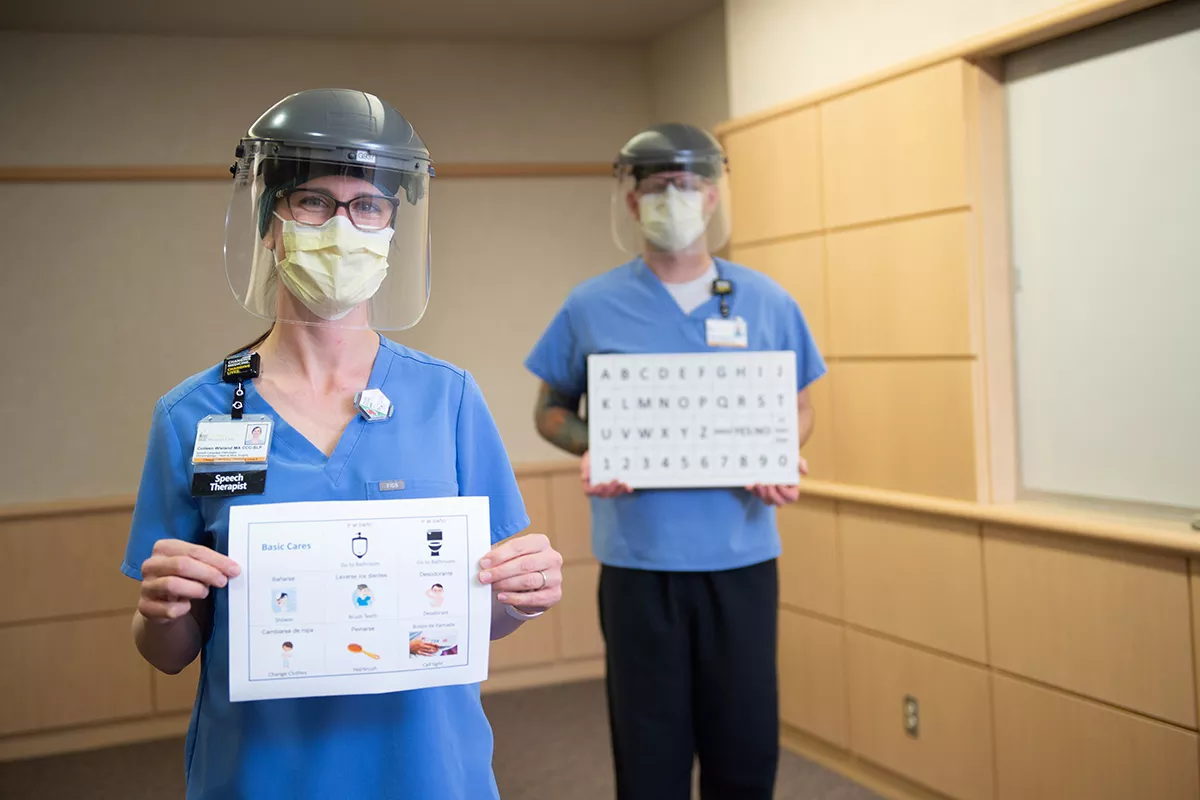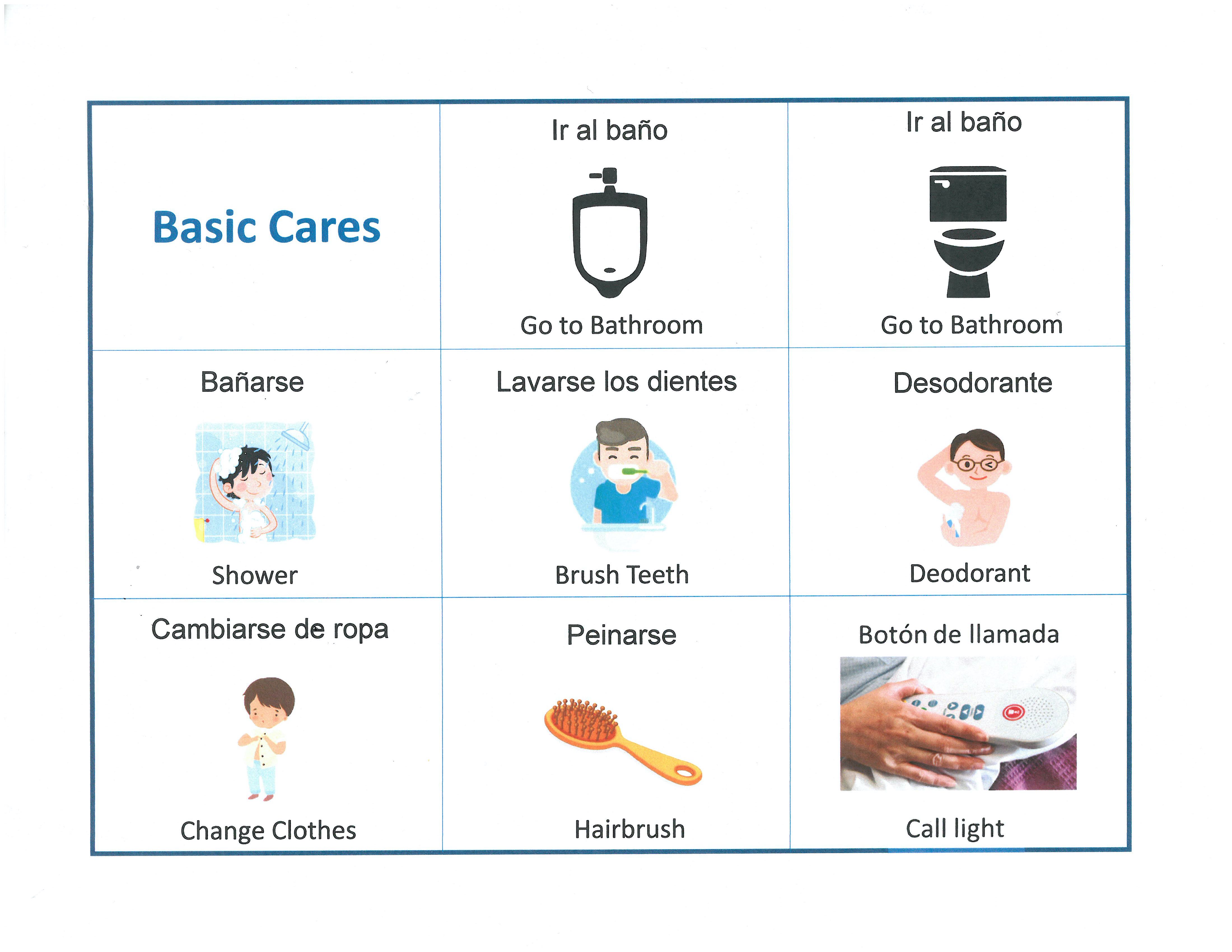Bridging a language gap: How communication boards are helping non-English speaking patients

Communication is an essential form of human connection—one most people take for granted. Communication is also vitally important in providing excellent health care. When patients and providers cannot communicate effectively, the quality of care often decreases.
For one patient in the Respiratory Specialty and Comprehensive Care Unit (RSCCU), COVID-19 presented a major communication obstacle. Speaking only Spanish, the patient relied solely on his family to communicate his wants and needs to his caregivers. So when visitor restrictions were put in place, the patient’s ability to effectively communicate with medical staff became a lot more challenging.
UI Health Care staff quickly recognized the problem and began identifying a solution.
Identifying patient needs
Colleen Wieland, speech-language pathologist in the Department of Otolaryngology, received the request to help the patient and his medical team. Wieland contacted Min Jeong Seo, assistant nurse manager for the RSCCU.
“The first thing we had to do was identify the patient’s medical and personal needs based on his routines and medical conditions,” says Seo, who also worked with Communications Liaison Laura Felderman. “I interviewed the patient and his son and combined that with information obtained from the family.”
Working collaboratively, several team members identified a comprehensive inventory of the patient’s basic needs.
“We compiled a huge list, and I contacted interpreting services,” says Wieland.
What is a communication board?

In a matter of hours, Syra Hurtarte in Interpreting Services translated the list to create the communication board.
“Think of it as a cheat sheet,” says Wieland. “Imagine drawing a tic-tac-toe board with a few more boxes to make a grid. Inside the grid, include basic wants and needs of the patient—including things like ‘pain,’ ‘nurse,’ and ‘difficulty breathing’—in the patient’s native language with the English translation underneath, allowing the patient to point to their request.”
With the translations, the care team was able to use the board to bridge the language barrier and reestablish communication with their patient.
“This communication board is a great tool,” says Hurtarte. “In dealing with COVID-19, we need to limit the contact we have with patients and wearing PPE can sometimes present a challenge for patients to hear us and for us to hear them. If the provider or the patient are unable to communicate effectively, the communication board is a great way to bridge the gap.”
A blueprint for success
The board used for the RSCCU patient was so well received that Wieland and her colleague Brian Peterson, speech-language pathologist, recognized its powerful impact and potential use for other areas of the hospital.
Using the first communication board as a blueprint, Peterson created new boards in Spanish and French and customized them specifically for patients battling COVID-19, with help from Hurtarte and French interpreter Salome Phillmann.
“Receptive and expressive communication is a patient right,” says Peterson. “It is our responsibility as medical professionals and as speech-language pathologists to utilize whatever methods are most appropriate to achieve effective, efficient, and reliable communication with our patients.”